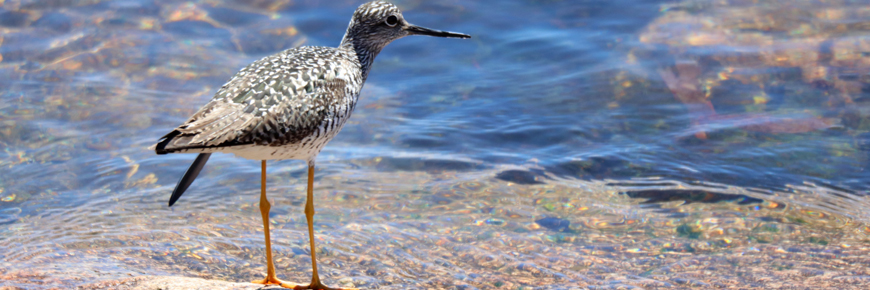
Greater yellowlegs
Cape Breton Highlands National Park
The greater yellowlegs is a medium-sized shorebird. Its most distinguishing characteristic is its long, bright yellow legs and feet. The greater yellowlegs feeds on small minnows and aquatic insects while wading in shallow water. Its nest is a depression in the ground, usually well concealed and lined with grass, moss or other plant material. The female usually lays four eggs which are buff in colour with dark brown spots and blotches. Both male and female actively care for the young.
Distribution
The greater yellowlegs breeds in the boreal forest from southern Alaska and northern British Columbia to Newfoundland and Cape Breton. It winters along both coasts from the northern United States to the Caribbean and South America.
Bird of the tundra
The greater yellowlegs generally nests in high tundra in the more northerly parts of Canada, but the taiga in Cape Breton Highlands National Park provides similar habitat. The greater yellowlegs is known to nest inside the park—look for it near the highland lakes in the summer. In the spring, greater yellowlegs are commonly encountered in the lowlands, before heading to good nesting habitat.
It is a very vocal bird, often calling when alarmed, the sound being a descending "whew-whew-whew". It also may emit a long series of monotonous "kwek-kwek-kweks." In spring it makes another call when its breeding territory is invaded, more like a "whee-oodle whee-oodle."
Related links
- Date modified :